 W
WThe Malayan campaign was a military campaign fought by Allied and Axis forces in Malaya, from 8 December 1941 – 15 February 1942 during the Second World War. It was dominated by land battles between British Commonwealth army units, and the Imperial Japanese Army with minor skirmishes at the beginning of the campaign between British Commonwealth and Royal Thai Armed Forces. The Japanese had air and naval supremacy from the opening days of the campaign. For the British, Indian, Australian and Malayan forces defending the colony, the campaign was a total disaster.
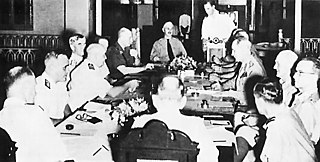 W
WThe American-British-Dutch-Australian (ABDA) Command, or ABDACOM, was a short-lived, supreme command for all Allied forces in South East Asia in early 1942, during the Pacific War in World War II. The command consists of the forces of Australia, the Netherlands, United Kingdom and the United States. The main objective of the command, led by General Sir Archibald Wavell, was to maintain control of the "Malay Barrier", a notional line running down the Malayan Peninsula, through Singapore and the southernmost islands of Dutch East Indies. ABDACOM was also known in British military circles as the "South West Pacific Command", although it should not be confused with the later South West Pacific Area command.
 W
WThe Battle of Muar was the last major battle of the Malayan Campaign during the Second World War. It took place from 14–22 January 1942 around Gemensah Bridge and on the Muar River. After the British defeat at Slim River, General Archibald Wavell, commander of ABDA, decided that Lieutenant General Lewis Heath's III Indian Corps should withdraw 240 kilometres (150 mi) south into the State of Johore to rest and regroup, whilst the 8th Australian Division would attempt to stop the Japanese advance.
 W
WThe Battle of Singapore, also known as the Fall of Singapore, was fought in the South-East Asian theatre of World War II when the Empire of Japan captured the British stronghold of Singapore—nicknamed the "Gibraltar of the East". Singapore was the major British military base in South-East Asia and was the key to British imperial interwar defence planning for South-East Asia and the South-West Pacific. The fighting in Singapore lasted from 8 to 15 February 1942. The Japanese victory was decisive, resulting in the Japanese capture of Singapore and the largest British surrender in history.
 W
WThe Battle of Borneo was a successful campaign by Japanese Imperial forces for control of Borneo island and concentrated mainly on the subjugation of the Raj of Sarawak, Brunei, North Borneo, and the western part of Kalimantan that was part of the Dutch East Indies. The Japanese main unit for this mission was the 35th Infantry Brigade led by Major-General Kiyotake Kawaguchi.
 W
WThe Borneo campaign of 1945 was the last major Allied campaign in the South West Pacific Area during World War II to liberate Japanese-held British Borneo and Dutch Borneo. Designated collectively as Operation Oboe, a series of amphibious assaults between 1 May and 21 July were conducted by the Australian I Corps, under Lieutenant-General Leslie Morshead, against Imperial Japanese forces who had been occupying the island since late 1941 – early 1942. The main Japanese formation on the island was the Thirty-Seventh Army under Lieutenant-General Masao Baba, while the naval garrison was commanded by Vice-Admiral Michiaki Kamada. The Australian ground forces were supported by US and other Allied air and naval forces, with the US providing the bulk of the shipping and logistic support necessary to conduct the operation. The campaign was initially planned to involve six stages, but eventually landings were undertaken at four locations: Tarakan, Labuan, North Borneo and Balikpapan. Guerilla operations were also carried out by Dayak tribesmen and small numbers of Allied personnel in the interior of the island. While major combat operations were concluded by mid-July, mopping-up operations continued throughout Borneo until the end of the war in August. Initially intended to secure vital airfields and port facilities to support future operations, preparatory bombardment resulted in heavy damage to the island's infrastructure, including its oil production facilities. As a result, the strategic benefits the Allies gained from the campaign were negligible.
 W
WThis is the complete order of battle of Allied and Japanese forces during the Borneo campaign of 1945. As the campaign was fought in three geographically separate areas and the same air and naval units supported more than one of these battles the order of battle is split into the three areas.
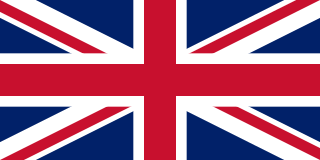 W
WThe British Military Administration (BMA) was the interim administrator of British Borneo between the end of the Second World War and the establishment of the Crown Colonies of Sarawak and North Borneo in 1946. Specifically, the entity lasted from 12 September 1945 to 1 July 1946. Labuan became the headquarters of BMA. The headquarters was mostly managed by the Australian Imperial Force (AIF).
 W
WThe British Military Administration (BMA) was the interim administrator of British Malaya from August 1945, the end of World War II, to the establishment of the Malayan Union in April 1946. The BMA was under the direct command of the Supreme Allied Commander South East Asia, Lord Louis Mountbatten. The administration had the dual function of maintaining basic subsistence during the period of reoccupation, and also of imposing the state structure upon which post-war imperial power would rest.
 W
WThe Battle of Christmas Island was a small engagement which began on 31 March 1942, during World War II. Assisted by a mutiny by soldiers of the British Indian Army against their British officers, Imperial Japanese Army troops were able to occupy Christmas Island without any land-based resistance. The United States Navy submarine Seawolf caused severe damage to the Imperial Japanese Navy cruiser Naka during the landings.
 W
WWilhelm Dommes was a German U-boat commander in World War II and recipient of the Knight's Cross of the Iron Cross. The Knight's Cross of the Iron Cross was awarded to recognize extreme battlefield bravery or successful military leadership. He is notable as being the commander of U-boats in the Indian Ocean, whereby German and Japanese forces fought together in the only time in the war. He was the first commander of the U-boat base, in the former British seaplane base in Penang, where he served as head of the Southeast Asia U-boat region.
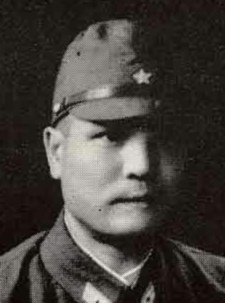 W
WIwaichi Fujiwara was an officer in the Imperial Japanese Army in World War II, and later a lieutenant general in the post-war Japan Ground Self Defense Force.
 W
WThe Battle of Gurun was a minor engagement between the Japanese and Commonwealth forces during the Malayan Campaign of the Second World War. The battle occurred when the 11th Indian Division attempted to slow down the Japanese advance after the disastrous Battle of Jitra at a position 3 miles north of the village of Gurun.
 W
WThe Royal Museum along Jalan Istana was the former National Palace and former residence of the Yang di-Pertuan Agong of Malaysia. It stands on a 13-acre (50,000 m2) site, located on a commanding position on the slope of a hill of Bukit Petaling overlooking the Klang River, along Jalan Syed Putra.
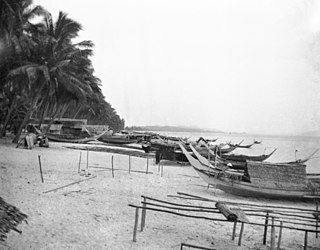 W
WThe Japanese Invasion of Malaya began just after midnight on 8 December 1941 before the attack on Pearl Harbor. It was the first major battle of the Pacific War, and was fought between ground forces of the British Indian Army and the Empire of Japan.
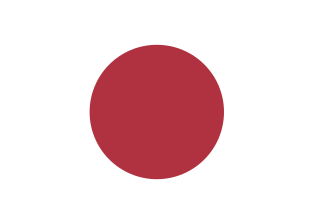 W
WThe then British colony of Malaya was gradually occupied by the Japanese between 8 December 1941 and the Allied surrender at Singapore on 16 February 1942. The Japanese remained in occupation until their surrender to the Allies in 1945. The first Japanese garrison in Malaya to lay down their arms was in Penang on 2 September 1945 aboard HMS Nelson.
 W
WOperation Jaywick was a special operation undertaken in World War II. In September 1943, 14 commandos and sailors from the Allied Z Special Unit raided Japanese shipping in Singapore Harbour, sinking six ships.
 W
WThe Battle of Jitra was fought between the invading Japanese and Allied forces during the Malayan Campaign of the Second World War, from 11–13 December 1941. The British defeat compelled Arthur Percival to order all Allied aircraft stationed in Malaya to withdraw to Singapore.
 W
WThe Battle of Kampar was an engagement of the Malayan Campaign during World War II, involving British and Indian troops from the 11th Indian Infantry Division and the Japanese 5th Division.
 W
WKesatuan Melayu Muda (KMM) was the first leftist and national political establishment in British Malaya. Founded by Ibrahim Yaacob and Ishak Haji Muhammad, KMM grew into a prominent pre-war nationalist movement, notable for its leftist political stance and willingness to use violence, a sharp break with their contemporaries in the Malay nationalist movement.
 W
WThe Battle of Labuan was an engagement fought between Allied and Imperial Japanese forces on the island of Labuan off Borneo during June 1945. It formed part of the Australian invasion of North Borneo, and was initiated by the Allied forces as part of a plan to capture the Brunei Bay area and develop it into a base to support future offensives.
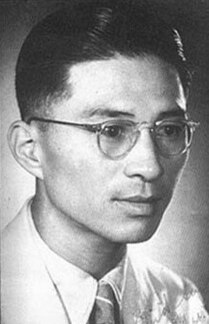 W
WLim Bo Seng was a Chinese resistance fighter based in Singapore and Malaya during World War II. Before the outbreak of World War II, he was a prominent businessman among the Chinese community in Singapore. When the Second Sino-Japanese War broke, he participated in anti-Japanese activities in Malaya and Singapore. During Japanese occupation of Malaya and Singapore, he was tasked to establish Force 136, a guerrilla task force backed by Special Operations Executive (SOE). However, he was captured by Japanese forces and died while interned. He is remembered as a war hero in Singapore and Malaysia.
 W
WThe Malaya Command was a formation of the British Army formed in the 1920s for the coordination of the defences of British Malaya, which comprised the Straits Settlements, the Federated Malay States and the Unfederated Malay States. It consisted mainly of small garrison forces in Kuala Lumpur, Penang, Taiping, Seremban and Singapore.
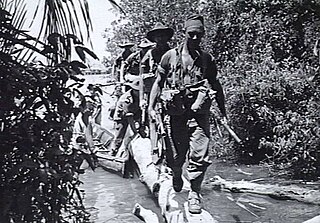 W
WThe Battle of North Borneo took place during the Second World War between Allied and Japanese forces. Part of the wider Borneo campaign of the Pacific War, it was fought between 10 June and 15 August 1945 in North Borneo. The battle involved a series of amphibious landings by Australian forces on various points on the mainland around Brunei Bay and upon islands situated around the bay. Japanese opposition to the landings was sporadic initially, although as the campaign progressed a number of considerable clashes occurred and both sides suffered significant casualties, although major combat was largely restricted to Labuan and around Beaufort. On the mainland, while Allied conventional operations focused largely on the coastal areas around Brunei Bay, guerrilla forces consisting of Dayak tribesmen and small numbers of Allied personnel from the Services Reconnaissance Department fought an unconventional campaign in the interior. The Allies were successful in seizing control of the region. Nevertheless, many of the strategic gains that possession of North Borneo provided were ultimately negated by the sudden conclusion of the war in August 1945.
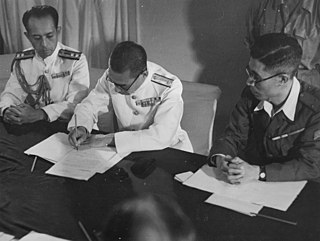 W
WOperation Jurist referred to the British recapture of Penang following Japan's surrender in 1945. Jurist was launched as part of Operation Zipper, the overall British plan to liberate Malaya, including Singapore.
 W
WOperation Krohcol, or the Battle for The Ledge, was a British operation in December 1941 to invade southern Thailand following the Japanese invasion of Malaya and of Thailand during World War II. It was authorised by Lieutenant-General Arthur Percival as a "mini Matador" after Operation Matador, a pre-emptive strike into Thailand which had been opposed by the British government and was not carried out. Due to delays in authorisation by Percival and in the forwarding of his order, the need to reorganise the troops for Krohcol instead of Matador, and resistance from Thai policemen the Krohcol column did not reach the Ledge in time.
 W
WOn 23 January 1942, the Parit Sulong Massacre in Johor, Malaya was committed against Allied soldiers by members of the Imperial Guards Division of the Imperial Japanese Army. A few days earlier, the Allied troops had ambushed the Japanese near Gemas and blown up a bridge there.
 W
WLieutenant-General Arthur Ernest Percival, was a senior British Army officer. He saw service in the First World War and built a successful military career during the interwar period but is most noted for his defeat in the Second World War, when he commanded British Commonwealth forces during the Japanese Malayan Campaign and the subsequent Battle of Singapore.
 W
WSquadron Leader Arthur Stewart King Scarf, VC was a Royal Air Force pilot and a recipient of the Victoria Cross, the highest award for gallantry in the face of the enemy that can be awarded to British and Commonwealth forces.
 W
WThe Singapore strategy was a naval defence policy of the British Empire that evolved in a series of war plans from 1919 to 1941. It aimed to deter aggression by the Empire of Japan by providing for a base for a fleet of the Royal Navy in the Far East, able to intercept and defeat a Japanese force heading south towards India or Australia. To be effective it required a well-equipped base; Singapore, at the eastern end of the Strait of Malacca, was chosen in 1919 as the location of this base; work continued on this naval base and its defences over the next two decades.
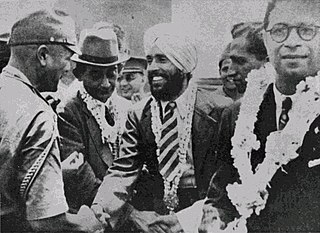 W
WMohan Singh was an Indian military officer and member of the Indian Independence Movement best known for organising and leading the Indian National Army in South East Asia during World War II. Following Indian independence, Mohan Singh later served in public life as a Member of Parliament in the Rajya Sabha of the Indian Parliament. He was a member of the Indian National Army (INA).
 W
WThe sinking of Prince of Wales and Repulse was a naval engagement in World War II, as part of the war in the Pacific, that took place on 10 December 1941 in the South China Sea off the east coast of the British colony of Malaya, 70 miles east of Kuantan, Pahang. The Royal Navy battleship HMS Prince of Wales and battlecruiser HMS Repulse were sunk by land-based bombers and torpedo bombers of the Imperial Japanese Navy. In Japanese, the engagement was referred to as the Naval Battle of Malaya .
 W
WThe Battle of Slim River occurred during the Malayan campaign in January 1942 between the Imperial Japanese Army and the British Indian Army on the west coast of Malaya.
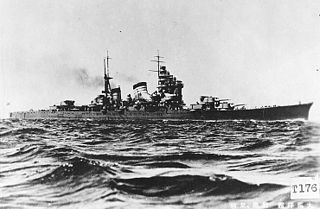 W
WThe Battle of the Malacca Strait, sometimes called the Sinking of Haguro, and in Japanese sources as the Battle off Penang (ペナン沖海戦), was a naval battle that resulted from the British search-and-destroy operation in May 1945, called Operation Dukedom, that resulted in the sinking of the Japanese cruiser Haguro. Haguro had been operating as a supply ship for Japanese garrisons in the Dutch East Indies and the Bay of Bengal since 1 May 1945.
 W
WField Marshal Archibald Percival Wavell, 1st Earl Wavell, was a senior officer of the British Army. He served in the Second Boer War, the Bazar Valley Campaign and World War I, during which he was wounded in the Second Battle of Ypres. He served in the Second World War, initially as Commander-in-Chief Middle East, in which role he led British forces to victory over the Italians in western Egypt and eastern Libya during Operation Compass in December 1940, only to be defeated by the German Army in the Western Desert in April 1941. He served as Commander-in-Chief, India, from July 1941 until June 1943 and then served as Viceroy of India until his retirement in February 1947.
 W
WTomoyuki Yamashita was a Japanese general of the Imperial Japanese Army during World War II. Yamashita led Japanese forces during the invasion of Malaya and Battle of Singapore, with his accomplishment of conquering Malaya and Singapore in 70 days earning him the sobriquet "The Tiger of Malaya" and led to the British Prime Minister Winston Churchill calling the ignominious fall of Singapore to Japan the "worst disaster" and "largest capitulation" in British military history. Yamashita was assigned to defend the Philippines from the advancing Allied forces later in the war, and while unable to prevent the Allied advance, he was able to hold on to part of Luzon until after the formal Surrender of Japan in August 1945.